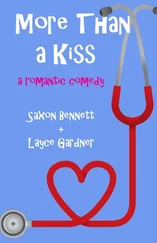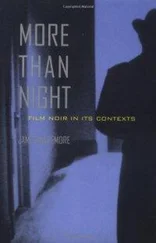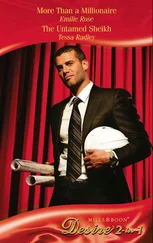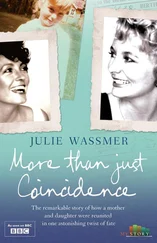The massacre led to a storm of international protest, including an official condemnation from the United Nations, who called upon South Africa to abandon apartheid and racial discrimination. The apartheid government resolutely turned its back on the world’s protests and cracked down even harder on its non-white population.
The response from the ANC and PAC was to target government buildings for sabotage. Explosives were made, arms purchased, and volunteers trained in combat. Thousands of young men such as Lizo Sitoto were driven to make a conscious decision to go into active opposition against the regime. These new recruits to what became known as ‘the struggle’ came from every region of the country, had very different ethnic, racial, and cultural backgrounds – and often disagreed on both political goals and the tactics to achieve them. What they did have in common was their renewed determination to smash apartheid and their willingness to accept the risks involved in trying to change their society.
Shortly after the Sharpeville massacre, Lizo found himself in the back of a car with a group of young ANC comrades, being driven through Northern Rhodesia to join a secret MK military training camp – but the men were soon to discover that the existence of the camp and their journey to it was a fairly open secret. White Rhodesian policemen had been tipped off by South African security agents that Lizo and his compatriots were arriving upon their soil to be trained in terrorism. The young men were arrested and sent back into South Africa – into the less than welcoming arms of the security police, who subjected Lizo to the same regime of interrogation that Sedick had suffered.
One of the charges levelled against Lizo was that he had left South Africa without permission. Ironically, though at the time being transported back to the country in the custody of security agents, he was also charged with returning to South Africa without proper permission.
Marcus Solomon never even made it over the border. A few years older than Sedick Isaacs, he had also attended Trafalgar High. Like Sedick, the studious and intellectual Solomon was planning to become a teacher. The secret police, however, knew all about his extracurricular activities. Throughout 1964, white Cape Town newspapers had run scare stories about a particularly dangerous bunch of subversives, the Yu Chi Chan Club (the name came from a book on guerrilla warfare written by Chairman Mao), also known as the National Liberation Front.
In truth, the club’s numbers were small and its members more interested in discussing theories of resistance and how to build a socialist society than in training for armed struggle. However, given the fervent, almost paranoid anti-communism of the government and their fears of a militant communist China, it was easy for the press to portray the Yu Chi Chan Club as a genuine threat to a ‘free’ Christian capitalist South Africa. Security operatives put its members under constant surveillance.
Solomon and one of his comrades in the club were leaving the country to help raise support for their cause. They had established a connection with some members of the ANC, who had set up their departure, and were now in a car with Winnie Mandela and her driver, being taken to a rendezvous that would be the next step on their journey. They were stopped by security forces, who demanded that Marcus and his friend go with them. Mrs Mandela and her driver were allowed to go on their way.
By 1963, much of the leadership of the ANC and PAC were in detention or in exile but, as more men became actively involved in trying to bring down apartheid, so the security forces redoubled their efforts to sweep up the very youngest members of the ANC and PAC, to make sure they would not supply new forces for the struggle. The government mass-produced laws that allowed it to detain and imprison opponents for any number of new ‘offences’, which went well beyond the legally enshrined crimes of treason and sabotage. Due process no longer mattered to a government claiming to protect society from a communist revolution – even if the suspects were little more than children.
Across South Africa, in a Pretoria township, a young student called Tony Suze was playing football in his school playground. By his own admission, Tony was football mad. Abundantly skilled and very athletic, his schoolmates knew never to go into a game against him half-heartedly. He played hard and always to win, even if it was just a kickabout during break.
Tony was good enough to harbour hopes of making it into the top ranks of black South African football but, like Lizo the rugby player, he knew that, under apartheid, he would never stand a chance of playing for his country, or in a racially mixed team. South Africans played football as they lived – apart. White teams and leagues were given the best playing facilities and by far the most funding. Black and coloured teams had to battle hard just to win the right to gain land for their own football pitches.
Tony’s township school was tidy, if not pretty. The staff tried hard to make the students’ lives there as enriching as possible, but the truth was that Tony’s school, like all the other black township educational establishments across South Africa, was starved of cash and even the most basic resources, such as books and writing materials. In 1964, the apartheid government spent one-sixth of the amount it spent on each white child on a black child’s education. The state saw no sense in educating blacks: it would only give them knowledge and skills for employment they would never obtain, and might give them designs above their station.
Cruel first-hand experiences of injustices such as this inspired Tony to become an active youth member of the PAC – an organization which the apartheid government had banned in 1960, along with the ANC, as part of its clampdown on opposition.
That day, as Tony and his mates pretended to be Bobby Charlton, Pelé, and Di Stefano on their school pitch, an unmarked car cruised slowly to a stop outside the school fence. Two men in suits eased themselves out of the front seats and shaded their eyes from the hot sun. Tony spotted them walking towards the school gates and knew that the inevitable was about to happen.
Some days earlier, Tony had been off school, unwell. In the late afternoon, a classmate had come to his house, not to see how he was feeling but to warn him that the secret police had come into the school and had been asking about him. Maybe he should stay off for a few days. With typical defiance, Tony told his friend, ‘If they want me, they can have me.’
He went back to school, full of youthful bravado – and more than a little naïve. To his way of thinking, what did a couple of years behind bars matter when you were only a teenager, at the start of your life? When the security police came to take him away, Tony handed the football over to a friend, laughed, and followed them defiantly to the car.
Once the security services had extracted what information they could from the political prisoners, Sedick, Tony, Marcus, and Lizo were transferred to prisons around the country to await trial. For almost all of them, their trials were a formality. However good their lawyers were, however weak the government’s case, conviction was virtually guaranteed. After all, in the logic of apartheid, the men wouldn’t have been charged if they hadn’t been opponents of the state. Security officials did not make mistakes. The only important questions were: what would the prison sentence be and where would it be served?
From Caledon Square police HQ, Sedick was transferred to Pollsmoor Prison to await trial. Later to become home to Nelson Mandela after his transfer from Robben Island, this massive correctional facility was built to house as many as six thousand common-law prisoners. Its grey maze of corridors and barrel-shaped cells stood incongruously in the plush white Cape Town suburb of Tokai – not that Sedick could see any of its manicured lawns and swimming pools from his cell deep within the prison’s bowels.
Читать дальше












